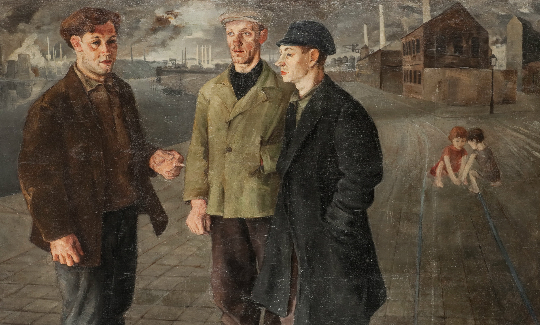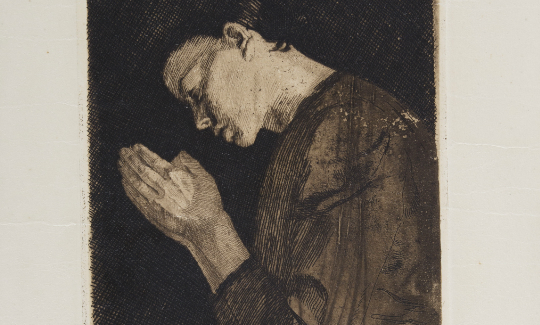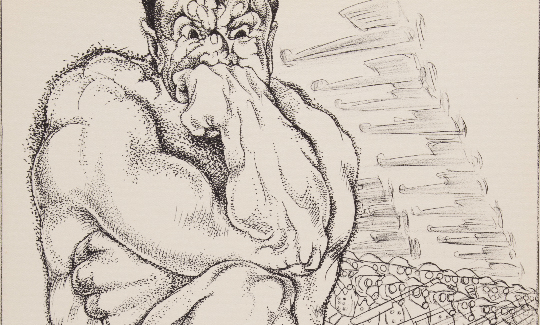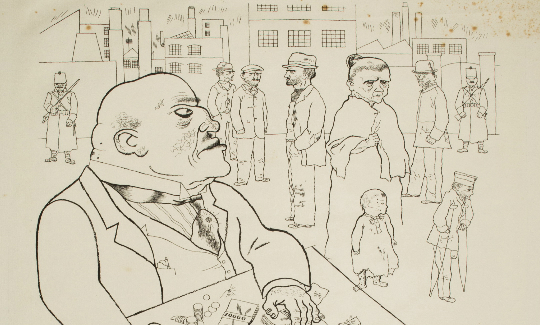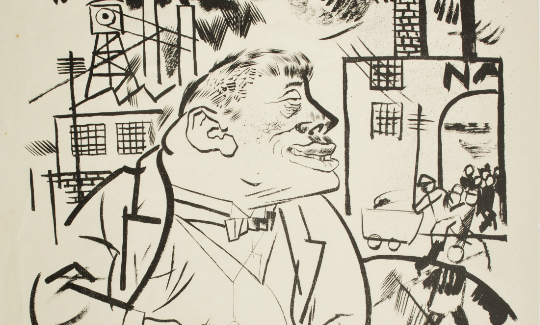Berlin, City of Lights: Between the Two World Wars
Thursday, 06.04.17, 20:00
Sunday, 24.12.17
On Thursdays and Fridays the entrance to the new exhibition is only 20₪.
More info:
04-6030800"New Objectivity," German Immigrants to Palestine, and Hermann Struck
Germany of the 1920s witnessed the birth of a new artistic movement, called "Neue Sachlichkeit" or "New Objectivity." The present exhibition addresses this movement's significant impact on the Jewish-German artists who immigrated to Palestine in those years, and its partial affinity with the work of Hermann Struck.
In the wake of the First World War, a wave of new movements swept the art world in Italy, France, and Germany: the avant-garde was replaced by the Arrière-Garde ("rear guard"), fueled by slogans promoting the "restoration of order." A noticeable trend of more realistic representations of the object contrasted starkly with Expressionism's radical subjectivity. In Germany, attention was turned to urban life, seen in a photographic, sometimes grotesque gaze: the coffee houses, the prostitutes, the unemployed, the capitalists, the professionals, and more.
Art critic Franz Roh wrote in 1925 that unlike Expressionism, with its penchant for ecstatic imagery, dynamism, high emotionality, and formal distortion, "New Objectivity" features everyday subject matter, an emphasis on the object, static imagery, alienation, and pronounced rationalism. The prominent artists of the movement were George Grosz, Otto Dix, Rudolf Shlichter, Georg Scholz, Wilhelm Heize, Christian Schad, August Sander, and others.
New Objectivity resonated with some of the artists living in Palestine in those years, who in any case preferred a more reserved kind of avant-garde. Its impact could be felt, for example, in some of the early works of Nachum Gutman. Yet the most prolific dialogue with this style appeared in the works of German-born artists.
Joseph Budko created paintings in the New Objective spirit in which he depicted Jewish professionals. Jacob Steinhardt adopted this style when depicting scenes from Berlin, or in paintings of laborers. Miron Sima, who studied in Dresden under Otto Dix, took up social realist painting, dominated by a sense of alienation and somberness. Shalom Siegfried Sebba created portraits of artists in a New Objective format and self-portraits inspired by Max Beckmann. Lea Grundig created etchings expressing social protest and etched portraits reminiscent of the New Objective style. Even the Berlin-born artist Mordecai Ardon (Max Bronstein), who was closely associated with the Bauhaus School, was influenced by New Objectivity in his depictions of working-class figures in a socialist spirit.
Considering all of the above, may we characterize some of Hermann Struck's prints, from his Berlin period to his immigration to Palestine in 1922, as influenced by the New Objective style? The answer is unequivocal. Struck did not react dialectically to Expressionism; moreover, he had shown the influence of academic realism from his first steps as an artist. His interest in social issues stemmed mostly from his humanist, apolitical personality. His anthropological interest in representations of Jewish craftsmen was already apparent in the war years. Can we conclude that, on the contrary, Struck's prints of craftsmen, highly appreciated in Germany, heralded the centrality of this theme in German painting of the mid-1920s?
Struck's soft line is different in character from the rough approach of the New Objectivists. Though remaining emotionally detached from the objects of his paintings, he expressed sympathy for them, rather than alienation or a sense of the grotesque. Arguably, by focusing on the oppressed Jews of Eastern Europe, Struck preceded the interest of the New Objectivists in the (mostly non-Jewish) oppressed of their own country. His social sensitivity is felt most clearly in his treatment of beggars, depicting mostly Eastern European Jews and his experiences in Jerusalem. While the New Objective artists displayed an attitude of sarcastic protest in depictions of such figures, Struck's perspective was that of a documenting tourist, or the compassionate gaze of a Jew conscious of the imperative inscribed in Deuteronomy, chapter 15: "You shall not harden your heart or shut your hand against your poor brother."
A shortened adaptation of an essay by art historian Dr. Gideon Ofrat
On Thursdays and Fridays the entrance to the new exhibition is only 20₪.

